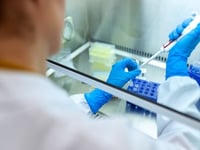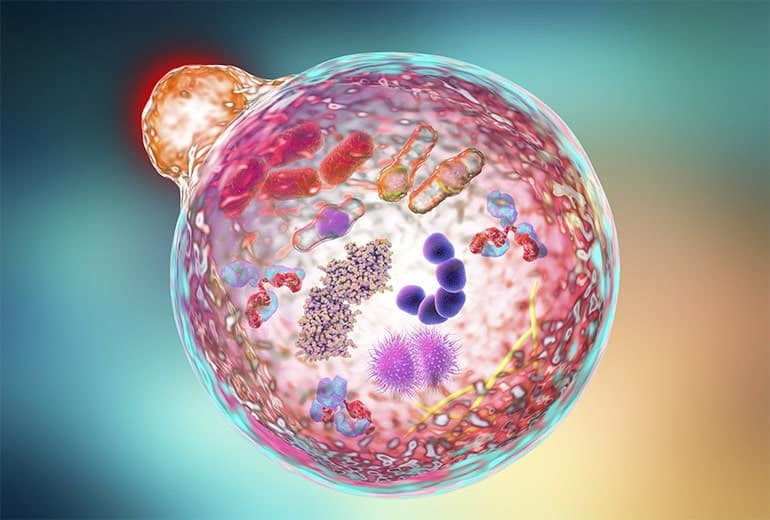 Perhaps one of the best things about awareness months, even if they bring focus to maladies and situations that are not always pleasant, is to get people interested to learn about the topic, and if they're interested enough, they'll do something to help out. This is the case with amyotrophic lateral sclerosis, or ALS. Some time back, there was the Ice Bucket Challenge which went viral, involved numerous athletes and celebrities and common people, and raised a ton of money for research and to support the afflicted people around the world. Yet, although I know it is a motor neuron disease and that it has affected famous people like the late brilliant physicist Stephen Hawking and more recently, the respected baseball media personality and fellow UChicago alum Sarah Langs (she's not even that old!), I found that I knew remarkably little about the disease itself. So this May, which is ALS Awareness Month, let's learn a little bit more together.
Perhaps one of the best things about awareness months, even if they bring focus to maladies and situations that are not always pleasant, is to get people interested to learn about the topic, and if they're interested enough, they'll do something to help out. This is the case with amyotrophic lateral sclerosis, or ALS. Some time back, there was the Ice Bucket Challenge which went viral, involved numerous athletes and celebrities and common people, and raised a ton of money for research and to support the afflicted people around the world. Yet, although I know it is a motor neuron disease and that it has affected famous people like the late brilliant physicist Stephen Hawking and more recently, the respected baseball media personality and fellow UChicago alum Sarah Langs (she's not even that old!), I found that I knew remarkably little about the disease itself. So this May, which is ALS Awareness Month, let's learn a little bit more together.
What is ALS?
 As one of the most forward-facing rare diseases in humans, amyotrophic lateral sclerosis (ALS) is considered a neuromuscular disorder due to progressive muscular weakness and atrophy, and has no current cure. I also did learn that there is a difference between muscular dystrophy, which has a genetic determinant, and muscular atrophy, which is just the gradual breakdown of muscle, but it appears that ALS is a little of both. The progression of ALS continues as motor neurons become less responsive or destroyed, and the muscles continue to weaken and break down, which causes balance issues, the gradual loss of the ability to move and speak, and ultimately the loss of the ability to eat and breathe. At the latest stages, the only recourse is to attempt to nourish the individual through a feeding tube and provide artificial ventilation, but typical life expectancy after diagnosis is only around three to five years, with a small proportion of individuals such as Stephen Hawking able to survive for much longer. ALS typically affects older individuals, but can also affect relatively young people from infants to 30-somethings like Sarah Langs. Given the heterogeneity of the disease, with only about 10% of all ALS cases considered heritable, it is an extremely difficult disease to accurately diagnose and even harder at this point to treat.
As one of the most forward-facing rare diseases in humans, amyotrophic lateral sclerosis (ALS) is considered a neuromuscular disorder due to progressive muscular weakness and atrophy, and has no current cure. I also did learn that there is a difference between muscular dystrophy, which has a genetic determinant, and muscular atrophy, which is just the gradual breakdown of muscle, but it appears that ALS is a little of both. The progression of ALS continues as motor neurons become less responsive or destroyed, and the muscles continue to weaken and break down, which causes balance issues, the gradual loss of the ability to move and speak, and ultimately the loss of the ability to eat and breathe. At the latest stages, the only recourse is to attempt to nourish the individual through a feeding tube and provide artificial ventilation, but typical life expectancy after diagnosis is only around three to five years, with a small proportion of individuals such as Stephen Hawking able to survive for much longer. ALS typically affects older individuals, but can also affect relatively young people from infants to 30-somethings like Sarah Langs. Given the heterogeneity of the disease, with only about 10% of all ALS cases considered heritable, it is an extremely difficult disease to accurately diagnose and even harder at this point to treat.
There is evidence that ALS is similar to a form of frontotemporal dementia, with some overlapping genetic determinants, and about half of all patients suffering from ALS have some degree of cognitive and/or behavioral impairment in addition to the symptoms of diminished motor functions. 1 Similarly to some other neurodegenerative disorders, aggregation of proteins such as TDP-43 in cortical neurons of ALS patients has been observed. Unfortunately, due to the relative rarity of the disease, the difficulty in acquiring tissues to work with via biopsy, and the fact that so few cases are actually associated with a heritable marker, researchers are still unsure about the origins of the disease and how to effectively treat it.
Research Directions for ALS
Much research is dedicated to the study of TDP-43 accumulation as a biomarker of ALS. 1 There are rare cases of mutations in TDP-43 that are observed in heritable ALS, and the aggregation of TDP-43 in the cytoplasm of neurons is associated not only with ALS, but other neurodegenerative disorders including Alzheimer's and Parkinson's diseases. There are also efforts into developing more advanced neuroimaging systems to identify structural abnormalities in the central nervous system to try to catch ALS symptoms earlier and better alter the course of the disease. Fluid based biomarkers such as the neurofilament light chain (NfL) can be a sign of nerve injury and can be used to assess ALS, whether sourced from the cerebrospinal fluid or from patient serum. 1
Celebrating our customers' accomplishments in scientific journals is one of my joys, and it is refreshing to learn that ABclonal has helped make progress in the fight against ALS. In 2020, an American collaboration noted the involvement of an intronic repeat in the genetic region known as C9ORF72, which is implicated in autophagy and vesicular trafficking as well as associated with familial and sporadic ALS. 2 Using custom antibodies generated by ABclonal against dipeptide repeats, the authors used a Drosophila model to measure the toxicity of those repeats. The conclusion was that the position of the repeat within a transcript in the context of immediate surrounding sequences can affect its relative toxicity, along with a protective effect with a specific element, which could have implications in the progression of diseases such as ALS.
 At the Tisch Multiple Sclerosis Research Center in New York, the authors of this next study used ABclonal's recombinant CHIT1 protein to aid in their assessment of differences between familial and sporadic ALS. Although the CHIT1 served in effect as a negative result to eliminate CHIT1 as a causative agent, this study was able to identify apolipoprotein B (ApoB) as the culprit in driving neurotoxicity, with removal of ApoB able to reduce neurological damage in their animal models. This effect mediated by ApoB also appears to be associated with the sporadic ALS but not the heritable ALS, an impactful finding that could help facilitate therapeutic development. 3
At the Tisch Multiple Sclerosis Research Center in New York, the authors of this next study used ABclonal's recombinant CHIT1 protein to aid in their assessment of differences between familial and sporadic ALS. Although the CHIT1 served in effect as a negative result to eliminate CHIT1 as a causative agent, this study was able to identify apolipoprotein B (ApoB) as the culprit in driving neurotoxicity, with removal of ApoB able to reduce neurological damage in their animal models. This effect mediated by ApoB also appears to be associated with the sporadic ALS but not the heritable ALS, an impactful finding that could help facilitate therapeutic development. 3
I never considered an environmental factor in ALS, but the next study noted that there are differences in gut microbiomes in ALS patients versus healthy controls. Bacteria like E. coli apparently produce curli proteins, which are amyloid-like proteins that could aggregate and cause misfolding of host proteins that could result in neurodegenerative disorders including Parkinson's and possibly ALS. With the help of ABclonal's antibodies against TNF-alpha, beta-actin, and GFAP (A10873 has since been replaced by A19058), the authors showed that chronic exposure to bacteria could induce symptoms of ALS in their mouse model. 4 While the exact mechanism is unclear at this time and will be explored in the future, this study at least provides evidence of indirect factors outside the nervous system that could drive ALS progression.
Finally, right down the road from ABclonal in Worcester, a research collaboration studied the effects of genes linked to neurodegenerative diseases on microglia, which are resident immune cells in the central nervous system. Microglia dysfunction is associated with many disorders including the usual suspects in Alzheimer's, Parkinson's, and ALS. Using ABclonal's RASD2 antibody as a measure of autophagy and mitophagy, the authors differentiated induced pluripotent stem cells into microglia-like cells and showed that an ALS-associated marker called profilin 1, when mutated, had defects in autophagic and vesciular transport pathways, which supports our general understanding of the pathogenesis of neurodegenerative disorders through disruption of these pathways. 5
Potential Therapies for ALS
As a rare disease, despite being prominent in social media and events, ALS is still relatively underfunded. There are approved medications that can decrease the rate of damage to motor neurons, such as the oral drug Riluzole (Rilutek) which decreases levels of glutamate, and the antioxidant Edaravone (Radicava). Most medications are intended to reduce stress, inflammation, or otherwise reduce the damage of motor neurons, but sadly these drugs only really improve survival outcome by a matter of months. 1
 I learned that there is a nonprofit biotechnology facility in Massachusetts called the ALS Therapy Development Institute (ALS TDI) which focuses solely on researching and developing therapies for ALS. Recognizing that ALS is an extremely complex disease that could involve many different biological pathways, research from institutes such as ALS TDI could provide further insights into other diseases. Part of the process is to interface with people suffering from ALS to gather data to better understand the disease, and to recruit people into clinical trials to accelerate the drug development and approval process.
I learned that there is a nonprofit biotechnology facility in Massachusetts called the ALS Therapy Development Institute (ALS TDI) which focuses solely on researching and developing therapies for ALS. Recognizing that ALS is an extremely complex disease that could involve many different biological pathways, research from institutes such as ALS TDI could provide further insights into other diseases. Part of the process is to interface with people suffering from ALS to gather data to better understand the disease, and to recruit people into clinical trials to accelerate the drug development and approval process.
ALS TDI was able to develop a drug called Tegoprubart, an antibody that blocks specific immune cell activation and appears to be effective in protecting nerve cells from ALS and Alzheimer's progression. Additionally, stem cell therapies have been attempted to slow and potentially reverse the course of ALS. In the Cedars-Sinai clinical trial, specialized stem cells were implanted into the spinal cord that were engineered to express a protective growth factor, GDNF, that could reduce the degeneration of neurons. The implantation procedure was shown to be safe and the ability to slow disease progression was very encouraging. These discoveries are only the tip of the iceberg toward an eventual cure.
Raising Awareness for ALS
 The mission of ALS Awareness Month is to bring the disease to everyone's attention through the sharing of stories of the afflicted as well as those who care for their loved ones living with the disease. All of this is in service to eventually finding a cure through fundraising and also getting talented researchers into the fold to perform the research needed to generate new therapeutic leads and strategies. While a cure is not possible given current knowledge and technology, the idea is to cultivate hope that we are trending in the right direction, and in the meantime we can at least make sure that ALS patients can experience the fullest and most comfortable lives possible.
The mission of ALS Awareness Month is to bring the disease to everyone's attention through the sharing of stories of the afflicted as well as those who care for their loved ones living with the disease. All of this is in service to eventually finding a cure through fundraising and also getting talented researchers into the fold to perform the research needed to generate new therapeutic leads and strategies. While a cure is not possible given current knowledge and technology, the idea is to cultivate hope that we are trending in the right direction, and in the meantime we can at least make sure that ALS patients can experience the fullest and most comfortable lives possible.
You can volunteer your time and get involved in ALS-themed events such as walk/runs, physical challenges, and more by visiting ALS.org. A cure may not come tomorrow, but it will come with our collective efforts.
References
- Ilieva H, Vullaganti M, & Kwan J (2023) "Advances in molecular pathology, diagnosis, and treatment of amyotrophic lateral sclerosis." BMJ 2023:383 (Epub).
- He et al. (2020) "The carboxyl termini of RAN translated GGGGCC nucleotide repeat expansions modulate toxicity in models of ALS/FTD." Acta Neuropathol Commun 8:122 (Epub).
- Wong et al. (2022) "Apolipoprotein B-100-mediated motor neuron degeneration in sporadic amyotrophic lateral sclerosis." Brain Commun 4(4):fcac207 (Epub).
- Kurlawala et al. (2023) "Mutant and curli-producing E. coli enhance the disease phenotype in a hSOD1-G93A mouse model of ALS." Sci Rep 13:5945 (Epub).
- Funes et al. (2024) "Expression of ALS-PFN1 impairs vesicular degradation in iPSC-derived microglia." Nature Communications 15:2497 (Epub).



